BMW has now come good with info on its new M3 Sedan and M4 Coupe. We’re entering the fifth generation of this iconic model, but it’s the first in the “M4†era and also the first time the M3 has featured a turbocharged engine, although returning to a straight six configuration.
For the purposes of ease let’s just refer to the two models collectively as the M3, which is now around 80kg lighter than the outgoing V8 model. The standard 6-speed manual gearbox sheds 12kg and includes automatic throttle blipping for downshifts. While the 7-speed DCT, now 40% lighter, features a “Smokey Burnout” feature. No, that’s not a joke:
The Smokey Burnout function allows the driver to indulge in a degree of rear wheel spin while the car is moving at low speeds.
Sending power to the rear wheels is still a key feature of the M3 and BMW has helped control the car’s 317kW by including an Active M Differential. The system ties in with DSC to ensure wheel spin is reduced. In addition, the M Dynamic Mode allows a degree of hooliganism before DSC intervenes to restore order.
The drive for lower fuel consumption sees electromechanical steering make an appearance on the M3 and it features three settings: Comfort, Sport and Sport+. These settings are also complemented with the optional Adaptive M suspension.
BMW says the tailor-made engine provides “smooth and efficient power delivery, very sharp response and reduced fuel consumption and emissions.” Thanks largely to the design of its mono-scroll turbochargers, direct injection and BMW’s well developed Double-VANOS continuously variable camshaft timing.
Weight reduction has been aided by both the Sedan and Coupe having a carbon fibre reinforced plastic roof. A CFRP strut brace in the engine bay not only increases rigidity but also saves 1.5kg compared with the old M3.
Trivia buffs will take note in the fact that production will be split across two facilities. The M4 Coupe will be built at the company’s headquarters in Munich, while the M3 Sedan will be built 120kms to the north at Plant Regensburg.
Before you sink your teeth into the detailed info below, here’s the key stats:
2014 F80 M3 / F82 M4 key stats
- Engine: 2979cc six cylinder with two mono-scroll turbochargers
- Power: 317kW (431hp) @ 5500–7300rpm
- Torque: 550Nm @ 1800–5500rpm
- Weight (unladen): 1520kg sedan; 1497kg coupé (add 40kg for DCT)
- Brakes (front): Four-piston fixed-calliper disc brakes / inner-vented, perforated
- Brakes (rear): Twin-piston fixed-calliper disc brakes / inner-vented, perforated
- Tyres: 255/40 ZR18 95Y (front); 275/40 ZR18 99Y (rear)
- Wheels: 9.0J x 18 light-alloy (front); 10.0J x 18 light-alloy (rear)
- 0-100km/h: 4.3s (manual); 4.1s (DCT)
- 0-1000m: 22.2s (manual); 219.s (DCT)
- Top speed: 250km/h (limited)
- Fuel consumption (combined): 8.8l/100km (manual); 8.3l/100km (DCT)
- CO2 emissions: 204g/km (manual); 194g/km (DCT)
- Emission rating: EU6
UPDATE: BMW Australia tells us the M3/M4 is due to arrive early in Q3 next year. List pricing yet to be confirmed, but appears anyone fearing a journey beyond a $200K list price can rest easy.
The New BMW M3 Sedan and New BMW M4 Coupe
- The new BMW M3 Sedan and new BMW M4 Coupe:Innovative engine technology and a focus on lightweight design
December 12 2013. The launch of the new BMW M3 Sedan and new BMW M4 Coupe sees BMW M GmbH revealing a new interpretation of the high-performance sports car – and carrying the BMW M philosophy over into the fifth generation of the M3. More than 40,000 examples of the fourth-generation BMW M3 Coupe were built, and now the BMW M4 Coupe is poised to continue this success story. The “M4†badge is a reference to the model series that provides the basis for the new M model – and, for the first time, the Coupe will be introduced at the same time as the four-door variant. Logic dictates the latter will be christened the BMW M3 Sedan.
“Four generations of the BMW M3 have blended motor sport genes and uncompromised everyday usability within an emotionally rich overall concept,†explains Dr Friedrich Nitschke, President BMW M GmbH. “The BMW M3 Sedan and BMW M4 Coupe represent an ongoing commitment to this philosophy. The engine is the heart of every M model, and the new turbocharged six-cylinder unit fitted in the two new cars combines the virtues of a high-revving naturally aspirated unit with the strengths of turbocharger technology. A committed lightweight design concept produces a weight saving of around 80 kilograms over the outgoing M3. The BMW M3 and BMW M4 take motor sport technology from the track to the road, and thousands of laps of the legendary Nürburgring Nordschleife – the world’s most exacting race track – have readied the new models for that transition. Meticulous and passion-fuelled development work has underpinned the creation of two high-performance sports cars that set new standards in terms of overall concept, precision and agility.â€
The high-revving six-cylinder in-line engine with M TwinPower Turbo technology newly developed for the new BMW M3 Sedan and new BMW M4 Coupe produces a maximum output of 431 hp. Its peak torque of 550 Newton metres (406 lb-ft) is available across a wide rev band and outstrips the figure recorded by the outgoing BMW M3 by roughly 40 per cent. And yet the engine also achieves a reduction in fuel consumption and emissions of around 25 per cent. Both the BMW M3 Sedan and BMW M4 Coupe cover the sprint from 0 to 100 km/h / 62 mph in 4.1 seconds (with the optional seven-speed M Double Clutch Transmission).
In the interests of maximising dynamic ability and ensuring excellent efficiency, weight savings of around 80 kilograms have been achieved over a comparably equipped predecessor model. The BMW M4 Coupe, for example, has a DIN kerb weight of 1,497 kilograms, thanks to the rigorous application of intelligent lightweight design measures. These include the increased use of lightweight materials such as carbon-fibre-reinforced plastic (CFRP) and aluminium for a number of chassis and body components. Indeed, both models feature a carbon roof.
One of the primary objectives in the development of the BMW M3 Sedan and BMW M4 Coupe was to ensure the new cars offered impressive race track capability. Hence the presence of a track-specification cooling system, which ensures that the optimum temperature balance for the engine, turbochargers and transmission is maintained at all times.
In order to accentuate the racing character of the two models in terms of both their technical composition and the fine-tuning of the cars, the engineers worked closely with BMW Motorsport’s professional racing drivers during the development phase. For example, DTM drivers Bruno Spengler and Timo Glock took part in the extensive testing and set-up work carried out at the Nürburgring-Nordschleife circuit.
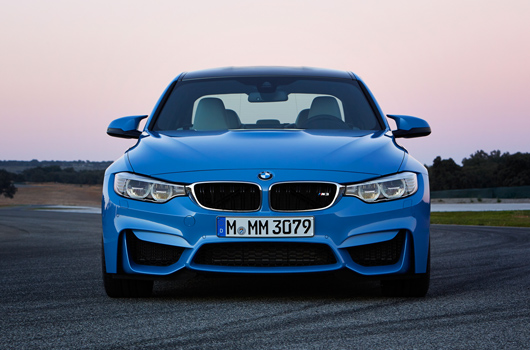
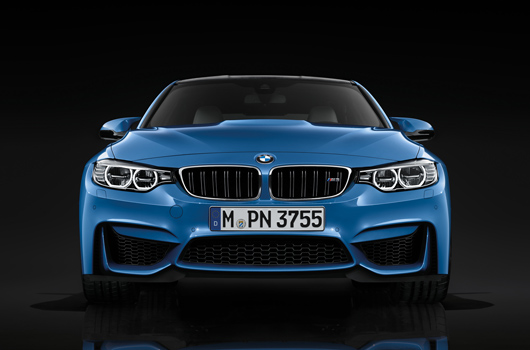



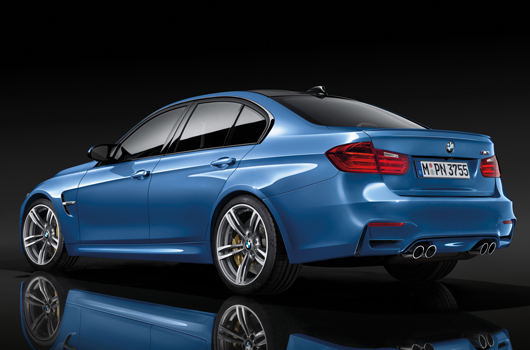







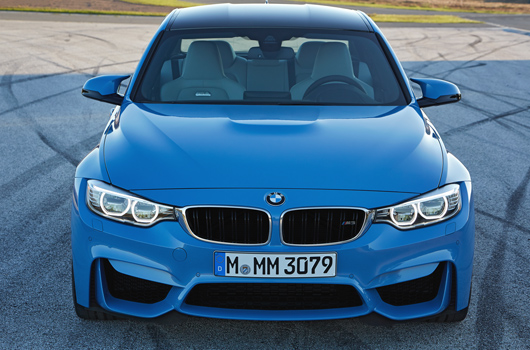






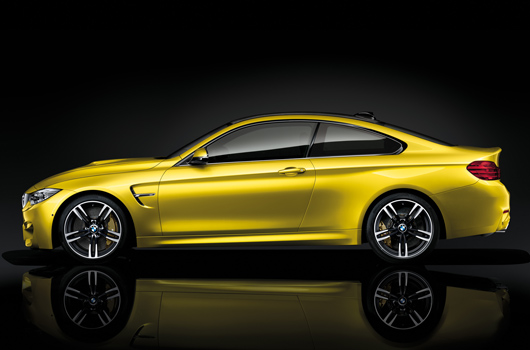














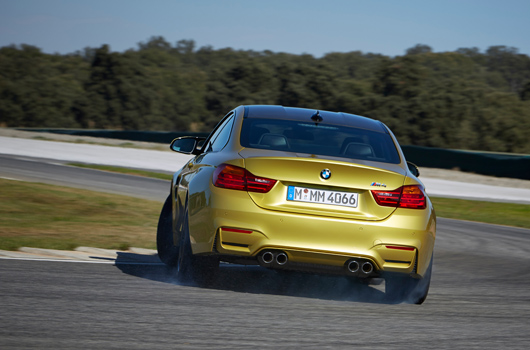






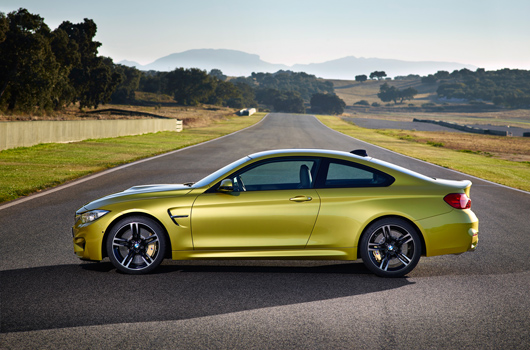

4 replies on “2014 BMW M3 Sedan and M4 Coupe revealed”
i never thought i would say this but the M3 looks better than the M4 coupe. Admittedly the baby shit yellow that we all thought was gone after the e46 M3 isn’t doing it any favours
Smokey Burnout function comes standard with most LSD RWD’s 😉
I’m the opposite, I think the M4 looks way better than the M3. Though it’s sad to see the name plate change. Because the original M3 all those years ago was never a 4 door but a 2 door. Somehow the badge M4 goes better with a 4 door car. Maybe BMW got it wrong and should have made the 3 series sedan into the 4 series. Or better still just kept both the sedan and coupe as the 3 series as it always has been. Just hate it when companies screw with tradition.
I know the DCT is faster but I hope there will be reviews on DCT vs Manual back to back to see which is more fun. I would lean towards the manual transmission.
Love the steering wheel. Can’t stand flat bottom wheels. Nice and round, doesn’t look to chunky and the centre air-bag piece looks smaller than most other performance cars. I like BMW has spent time thinking about what people what in a sports sedan.
[…] well as the launch of the highly anticipated M3 and M4 in Detroit this week, BMW has much more in store during 2014. Follow the source link from […]